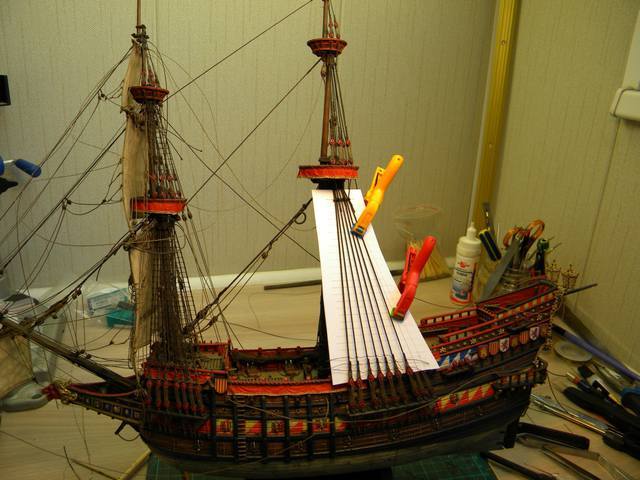Galleons were large, multi-decked sailing ships first used as armed cargo carriers by European states from the 16th to 18th centuries during the age of sail.
Galleons were constructed from oak for the keel, pine for the masts and various hardwoods for hull and decking. The expenses involved in galleon construction were enormous. Hundreds of expert tradesmen worked day and night for months before a galleon was seaworthy. To cover the expense, galleons were often funded by groups of wealthy businessmen who pooled resources for a new ship. Therefore, most galleons were originally consigned for trade, although those captured by rival states were usually put into military service.
Because of the long periods often spent at sea and poor conditions on board, many of the crew often perished during the voyage; therefore advanced rigging systems were developed so that the vessel could be sailed home by an active sailing crew a fraction of the size aboard at departure.
The most distinguishing features of the galleon include the long, prominent beak followed by a foremast and mainmast, and below those the square quarter gallery at the stern.

